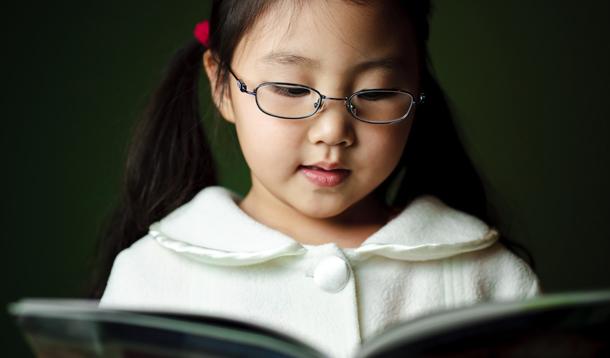
I was in grade four when I first started noticing I couldn’t see the blackboard clearly. It soon became a major source of frustration and embarrassment—getting called on to answer a question was more than a little awkward—and it definitely hindered my school performance that year. I didn’t understand what the problem was (I had no way of knowing my vision wasn’t normal, of course), and I’m sure I didn’t communicate it properly to my mother, because there was a long time lag before she eventually took me to see the eye doctor, a Doctor of Optometry.
I’ve worn glasses and contact lenses ever since (my vision is brutal—uncorrected I can see the big old “E” on the chart, and that’s about it). I remember driving home after getting my first pair of glasses and being wonderstruck at the sight of the leaves on the trees in sharp, clear outlines. So this is what everyone sees?
In school-aged kids, unrecognized vision problems are a major cause of learning difficulties. Fact is, eighty percent of learning is based on vision. Your child’s eyes are in constant use for a variety of complex visual tasks, between books, the blackboard, and computer screens. Unrecognized vision issues can significantly hamper your kid’s academic progress.
What’s more, when kids can’t see properly, they may appear to show a lack of attention, or restlessness, or poor behaviour. You can see where this is going. Kids who are merely having trouble with their vision can easily be labelled as having ADHD or a learning disability, while their true underlying issue remains untreated.
Vision also plays a role in social development and sports. If you can’t see your friends on the playground, if you can’t see the dodgeball heading toward your nose...it’s going to cause problems.
Kids won’t always be able to articulate the fact that they’re having trouble seeing, or they may not even realize that their eyesight is not the same as their peers. And the fact is, it's a common condition: one in four school-aged children has a vision problem. That’s why a preventive screening exam is important.
If your child is having vision problems, what are the possible signs?
For more signs to look for, watch this video:
Some schools will do a brief eye screening exam with an eye chart. And while this is a start, it doesn’t go quite far enough in terms of assessing total eye health, and picking up more subtle vision issues. For example, sometimes a kid can have one eye doing most of the work—enough to give him a passing grade on the screening test—and this hides the fact that the other eye isn’t functioning properly.
Bringing your child to a Doctor of Optometry for a comprehensive exam is an excellent way to prevent your kid from slipping through the cracks. A Doctor of Optometry is qualified to diagnose, treat, and help prevent eye diseases and disorders of vision. And because eyes can be a window to the rest of the body, a thorough eye exam can identify certain general health conditions at an early stage before other signs have developed.
So when do you need to start bringing your child in for eye exams? Doctors of Optometry recommend infants have their first eye examination between six and nine months of age. After that, kids should have at least one eye exam between the ages of two and five, and then yearly after starting school.
Like many things, you want to identify problems early—or, ideally, before they even become a problem. Getting your child’s eyesight checked is a big step toward ensuring a successful, happy school year.
And there's no better time than now: October is Children's Vision Month!

This post is brought to you by Doctors of Optometry Canada.
www.doctorsofoptometry.ca
Connect with the Doctors of Optometry Canada on Facebook: https://www.facebook.com/AskaDoctorofOptometry